Firework Safety
 It has reached that time of year again when rhyme and reason disappears in the fun of seeing explosive actions and hearing loud noises.
It has reached that time of year again when rhyme and reason disappears in the fun of seeing explosive actions and hearing loud noises.
Sadly, although people are warned of the dangers every year, there will be somebody who thinks that he/she knows better, and there will be a serious injury from a firework display or party.
So this week, I am going to look at fireworks and firework displays in a hope that you and your family can enjoy the fun of firework night, without the need to attend A&E or call the fire brigade.
I am going to look at the
- Facts about fireworks
- Some safety tips for putting on or attending a firework display
- Share an incident where things went wrong which is compliments of the NHS Choices web site.
This week’s 2 recent HSE cases also look at accidents that could and should have been avoided.
- Mr Conway, a 33-year-old father of two, was sent in to remove debris created from the process of stripping wheels using a chemical known as EFX Strip.
- Andrew Newbold had to have his hand amputated after the incident at Board 24 Limited
As ever, if you have a subject that you would like us to cover one week, please contact us by phone 01458 253682, email or via our Facebook page or by Twitter.
Some facts about fireworks
Fireworks are not toys. They are explosives and the injuries they can cause can be devastating. The following are facts about fireworks which may surprise you. Especially those about sparklers 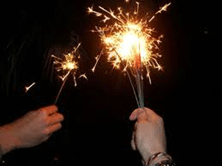 that parents happily light and then give to their young children!
that parents happily light and then give to their young children!
Some safety tips for putting on or attending a firework display
 Firework displays should be enjoyable and spectacular occasions – but they obviously need some responsible planning. The good news is that there is straightforward guidance to help you.
Firework displays should be enjoyable and spectacular occasions – but they obviously need some responsible planning. The good news is that there is straightforward guidance to help you.
If you are organising a major public event, you will clearly need a robust and detailed approach to planning as well as professional involvement.
There are, on average, about 1,000 firework-related injuries a year. About half of these injuries occur at family or private parties.
The Royal Society for the Prevention of Accidents (RoSPA) advises that the safest place to enjoy fireworks is at a properly organised public display.
But if you’re having a celebration at home, planning ahead can reduce the risk of things going wrong.
“Good preparation is crucial for a successful and safe display,” says Sheila Merrill, RoSPA’s home safety manager for England.
Visit RoSPA’s safer fireworks website to familiarise yourself with the fireworks code, which includes safety advice to follow before, during and after your display.
Although adults tend to handle fireworks at home, half of the firework-related injuries are to children. Adults should ensure that children stay safe during firework displays.
Follow this easy checklist for a safe home firework display:
Safety tips for before a fireworks display
Things you will need on fireworks night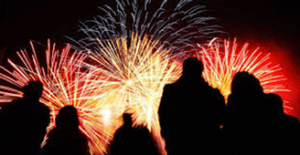
Safety tips for during a fireworks display
It’s illegal to set off fireworks after 11pm (except on November 5, when they can be used up to midnight, and New Year’s Eve, Chinese New Year and Diwali, when they can be used up to 1am the following day).
Safety after a fireworks display
- Wear strong gloves and use tongs to dispose of used fireworks.
- Never throw used fireworks on a bonfire.
Sparklers – safety advice
Safety around bonfires
‘A firework exploded in my face’
A giant firework exploded in Andy Minter’s face when he tried to remove the fuse from a device that had failed to go off in his garden.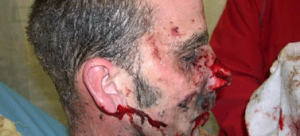
He had challenged two neighbouring dads to see who could hold the biggest display in October 2007.
As the last guests left, he returned to a massive multiple firework, saved for the finale, which had not fully exploded.
“I got a bit cocky and disturbed the packaging to see if I could pull out the fuse,” says Andy, a scaffolder from Worthing in West Sussex.
As he bent down, two of the rockets shot up, hitting him in the nose and ear, and badly burning his neck.
Aware that the remaining rockets were ready to ignite in sequence, Andy quickly swerved to the side and felt the force of each one blasting off just inches from him.
“It happened instantly,” he says. “I saw sparks and then they exploded in my face. It felt as though I had run into a brick wall. I didn’t want to open my eyes, in case I lost my sight.
“Waiting for the ambulance to arrive seemed like an eternity, and the only thing in my mind was that I had lost half my face and that I was blinded for life.”
Andy’s lip was split in half and chunks of skin were taken from his cheek, nose and ear. His face was peppered with gunpowder.
He had stitches and a medical facial scrub to remove several layers of his skin to promote the regrowth of healthy tissue.
He had to have his dressings changed every couple of days for three months, and could barely open his jaw for weeks.
‘My carelessness with explosives’
Andy says his injuries were the result of carelessness and irresponsible competition between neighbours.
“Over the last few years, fireworks night had become a competition between me and two neighbours,” he says.
“The fireworks we bought had become bigger and better, and we would watch each other’s displays from our back gardens.
“Really, you need a 300ft garden to let these sorts of fireworks off, because they are so powerful.”
Andy, who was treated at East Grinstead Special Burns Unit, is fortunate enough to have almost no scars.
He says: “I had to wait six weeks before I could see how badly injured my face was. The bandages were taken off in a private room. To be honest, I was relieved. Doctors had warned me it could have been a lot worse, so I think I got off lightly.
“For ages after the accident, I didn’t want anyone to see me. I don’t know why – maybe it was the embarrassment of what had happened. I took a very long time to get over it.”
He says he shouldn’t have returned to the firework, or bought such a powerful one. “I regret going back to it and being silly,” he says. “I have flashbacks all the time.
“I was worried the accident would affect my seven-year-old son Tobi, but luckily he was in the front room when it happened and didn’t see anything.”
Enjoy the fun but please be safe.
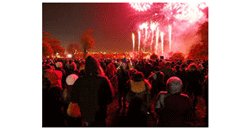
If you would like further help on this topic or if you have any topic you would like us to cover in this newsletter please contact us by phone 01458 253682, or email.
Training Courses
CDM Regulations 2015 – For the Smaller Builder
Course Objective
The Construction (Design and Management) Regulations 2015 (CDM 2015) come into force on the 6th of April 2015, and will apply to all construction projects in the UK incl. Domestic projects
This CDM 2015 awareness training course has been developed to provide smaller builders and tradesmen, especially those who haven’t dealt with CDM before, with an understanding of their role and responsibilities under CDM 2015.
Seminar Outline
- Overview of the Industry accident rate
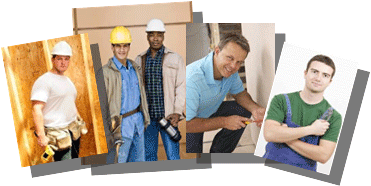
- The Legal framework
- Enforcement
- Risk Assessment
- CDM 2015 and the duty holders: Client, PD, Designers
- Principal Contractors duties
- Contractors duties
- Construction Phase Plan
- Site Safety Management
Benefits of Attending
This course give an overview of the requirements for smaller builders and domestic clients and how the regulations apply to all construction projects from minor repairs and decorating works through to building a new house for a domestic client.
Course Duration: 1/2 day – Morning 09.30 – 12.30
COURSE REF DATE(s) LOCATION
CDM2015 1509 Tuesday 10th November 2015 Taunton Racecourse
Fee: £80 to include Course notes, Coffee on arrival & mid-morning refreshments and a Certificate of Training (Fee subject to VAT)
If this course is booked together with the Asbestos Awareness course below – A free lunch will be provided.
ASBESTOS AWARENESS – Half-Day Course
Course Objective – Training /CPD Certificate issued
Asbestos awareness training is essential for employees whose work holds the potential to expose them to asbestos. The Control of Asbestos Regulations 2012 puts a requirement on employers to ensure that their staff have undergone suitable asbestos awareness training so that they are aware of the potential dangers they may face and also the procedures they must follow in the event they are working in the vicinity of asbestos containing materials (ACMs)
Who Is This Course Suitable For?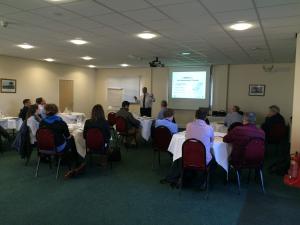
The main groups of workers that are deemed to be at risk from asbestos exposure and therefore the groups most requiring asbestos awareness training are as follows:
- General Maintenance Staff.
- Electricians, Plumbers & Gas Fitters. Painters & Decorators.
- Construction & Demolition Workers. Joiners and Plasterers.
- Computing & Telecommunications Engineers.
- Heating & Ventilation Engineers.
- Roofers.
- Architects & Building Surveyors
- Fire & Burglar Alarm Installers
Syllabus
- Asbestos- a history of use
- What is Asbestos
- Amosite (Brown) – Chrysotile (White) – Crocidolite (Blue)

- Asbestos Containing Product Examples
- Asbestos Properties and the hidden legacy of asbestos
- Control of Asbestos Regs and Requirements
- Exactly who is at risk
- Action to take on discovery and Survey and Recording
Course Duration: ½ day – Afternoon 13.30 – 16.30
COURSE REF DATE(s) LOCATION
ASBESTA 1504 Tuesday 10th November 2015 Taunton Racecourse,
Fee: £65 to include Course notes, Coffee/Tea on arrival & mid-morning refreshments, CPD Certificate of Training (Fee subject to VAT)
Treating Health like Safety – 1/2 day course
Course Objective – Training and CPD Certificate issued
This 1/2 day course looks at the health risks associated with industry, especially construction. It considers the health risks and looks at steps you can take to improve the health of your workforce and of your business
Seminar Outline
- Industry background
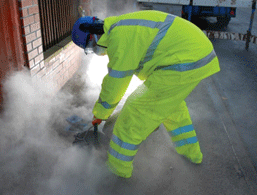
- Getting the message
- Your duties as employer
- Employees Duties
- Health risks that can be easily controlled
- Expectations of the HSE
- The way forward
Benefits of Attending
This course will give you the guidance needed to improve the health and wellbeing of your workforce and to keep your company compliant. The HSE treats non-compliance with health issues very seriously and intends to list companies that do not comply on a public register and this could affect your reputation.
Course Duration: 1/2 day – Morning 09.30 – 12.30
COURSE REF DATE(s) LOCATION
CDM2015/3 1501 Tuesday 17th November 2015 Taunton Racecourse
Fee: £80 to include Course notes, Coffee on arrival & mid-morning refreshments and a Certificate of Training (Fee subject to VAT)
For more information and to book and pay on line please visit our training page.
If you have any questions about these courses or any other training or would like us to run a particular course for you, call Jon Wilkins of the Wilkins Safety Group on 01458 253682 or email him.

Your Business is Safer in our Hands
